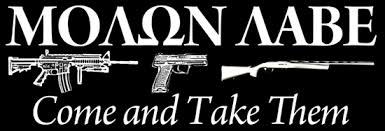First, it is important to understand what an assault weapon isn't. The terms "assault weapon" and "assault rifle" are often confused. According to Bruce H. Kobayashi and Joseph E. Olson, writing in the Stanford Law and Policy Review:"
"Prior to 1989, the term "assault weapon" did not exist in the lexicon of firearms. It is a political term, developed by anti-gun publicists to expand the category of "assault rifles."
 " What some people call "assault weapons" function like every other normal firearm—they fire only one bullet each time the trigger is pressed. Unlike automatics (machine guns), they do not fire continuously as long as the trigger is held. ... Today in America, most handguns are semi-automatics, as are many long guns, including the best-selling rifle today, the AR-15, the model used in the Newtown shooting. Some of these guns look like machine guns, but they do not function like machine guns. "
" What some people call "assault weapons" function like every other normal firearm—they fire only one bullet each time the trigger is pressed. Unlike automatics (machine guns), they do not fire continuously as long as the trigger is held. ... Today in America, most handguns are semi-automatics, as are many long guns, including the best-selling rifle today, the AR-15, the model used in the Newtown shooting. Some of these guns look like machine guns, but they do not function like machine guns. "
What makes this semi-automatic rifle a ranch gun...and this AR-15 semi-automatic rifle an assault weapon?

"The answer is perception. According to a 1988 report by the Violence Policy Center, an anti-gun lobby:"
[H]andgun restriction is simply not viewed as a priority. Assault weapons ... are a new topic. The weapons' menacing looks, coupled with the public's confusion over fully automatic machine guns versus semi-automatic assault weapons—anything that looks like a machine gun is assumed to be a machine gun—can only increase the chance of public support for restrictions on these weapons.
According to a Department of Justice study, the firearms that the Assault Weapons Ban would ban were used in only 2% of gun crimes.
In 2004, the Federal Assault Weapons Ban expired. It was not renewed. The AWB had failed to have an impact on gun crime in the United States. A 2004 Department of Justice report concluded:
"Should it be renewed, the ban's effects on gun violence arel likely to be small at best and perhaps too small for reliable measurement. [Assault weapons] were rarey used in gun crimes even before the ban."
It has been estimated that at least 3.3 million AR-15 rifles were sold in the United States between 1986 and 2009. In its ubiquity, the AR-15 is a modern musket—the default rifle with which law-abiding Americans exercise their right to keep and bear arms.
The truth about assault weapons is that there is no such thing. So-called assault weapons are semi-automatic firearms—the guns most commonly used by millions of law-abiding Americans.
Banning firearms because of their cosmetic features is misguided.

